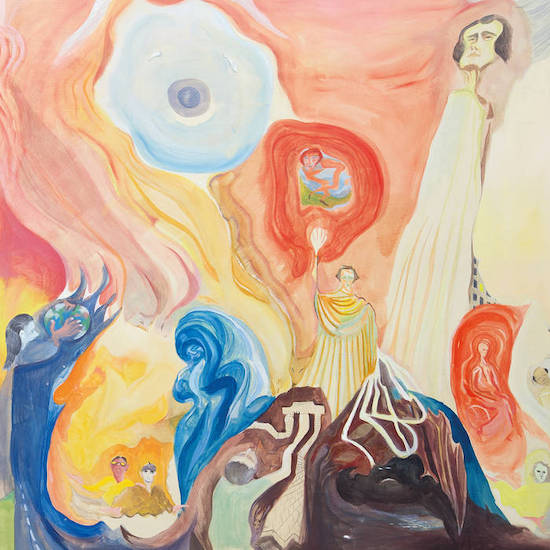Piotr Kurek’s music reminds me of the video game Monument Valley. The main character manipulates monuments and creates evolving paths to explore new, surreal, and mysterious worlds. The perception of space and gravity changes, graphic visuals confuse the eye, and subsequent stages show different landscapes.
This Polish instrumentalist, film and theatre music composer explores various aesthetics and performance techniques, aiming at creating imaginary musical spaces. In the late 1990s, he formed the breakcore group Ślepcy and later developed his solo recordings. Inne Pieśni was based on processed, looped excerpts of Wallachian, Serbian, and Albanian songs. Heat was inspired by tropical field recordings, dressed in the sound of Rhodes, organ, and synthesizer.
A year ago, in World Speaks, he combined vocal modulations with reeds and organs, building a mystical and polyphonic tale. Recent years have also seen a rash of his music for theatre (two albums released by Mondoj) or films like Sweat or this year’s unusual, slightly surreal Mammalia. In each case – whether dark synth passages, tropical sound fantasies, baroque inspirations, vocal modulations, or a post-krautrock pulse – his recordings have some lightness and mystery, which are Kurek’s trademark.
Smartwoods is no different. Initially, most instruments were programmed in MIDI, but later recordings of this material were made on acoustic instruments and presented at the Unsound Festival. Kurek’s combination of baroque music and jazz lyricism, seemingly evoking associations with the polished sound of ECM or dreamy electronica, may give the impression of an easy-listening, pleasant soundtrack. The point, however, is that the catchy pulsations played by Anna Pašic on harp, the double bass background by Wojtek Traczyk, or the flute parts by Tomasz Duda and Kurek on keyboards, MIDI controller, and guitar build up an atmosphere of a surreal story, leading us through a labyrinth of skillfully constructed compositional juxtapositions.
Emerging harmonies, micro-sounds, and punctuated playing of acoustic instruments merge into a non-intrusive atmosphere. The music does not explode; everything sounds close to the ear, intimate, like you are in a small room with all the musicians. Kurek joins acoustic layers with electronic modulations, sometimes going so far that we don’t quite know the source of the sound at any given moment. There are tracks when the harp sound is distorted, the brass is stretched, and an electric guitar weaves over everything dreamily, as you can hear in ‘Klamm’ or ‘Noa’. It reminds me of soundtracks to fairy tales, acid early music, and baroque suites. But each time, something doesn’t fit with the label. He is somewhere between. That’s what makes the album so unusual.
Smartwoods is like a weird soundscape to some surrealist story, which reminds me of the painting with shape-shifting figures on the cover of the record by Tomasz Kowalski. There is nothing catchy here, no pop melodies or chords, and the music flows smoothly but linearly. However, it has a magnetism and enough hypnotizing phrases to pull you into it increasingly with each listening of this semi-acoustic, semi-programmed combination of folk, quasi-chamber, and artificial imaginary ensemble.


